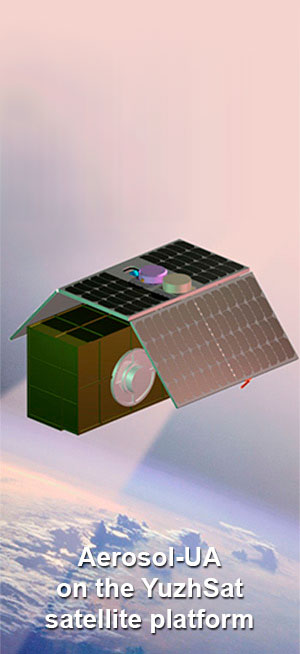Satellite project Aerosol-UA for polarimetric remote sensing of aerosols in the terrestrial atmosphereWhy aerosols? According the Radiative forcing concept (© IPCC, Stocker et al. 2013), aerosols in the terrestrial atmosphere is most variable by space and time constitution that impacts on the energy balance. 1. Aerosol impact as the component of radiative forcing has largest uncertainty to estimate. 
That is the result of the target choice for the space mission Aerosol-UA |
     |


| Direct and indirect impact of aerosol on climate system (clouds-albedo) © 2013 Nature Education | |
 |
Highest effect with absorbing aerosol (black carbon) above black, dark surface (warming effect)
Aerosols fine fraction particles contribute to the formation of more powerful clouds with a longer life (cooling effect) |
| Ukrainian satellite mission Aerosol-UA: polarimetric investigation of atmospheric aerosol, three segments of the mission: |
||

Satellite: ScanPol + MSIP
|
1. Satellite |
Data-processing: Mission products  |
| 2. Data-processing | ||
3. Calibration and validation AERONET
Calibration and Validation  |
||
| Idea for Aerosol-UA project come from Glory experiment and APS instrument: Mishchenko, M. I., Cairns, B., Kopp, G., Schueler, C. F., Fafaul, B. A., Hansen, J. E., Hooker, R. J., Itchkawich, T., Maring, H. B., and Travis, L. D. (2007). Accurate monitoring of terrestrial aerosol and total solar irradiance: Introducing the GLORY mission. B. Am. Meteorol. Soc. 80, 2229–2259. doi:10.1175/BAMS-88-5-677 |
||


